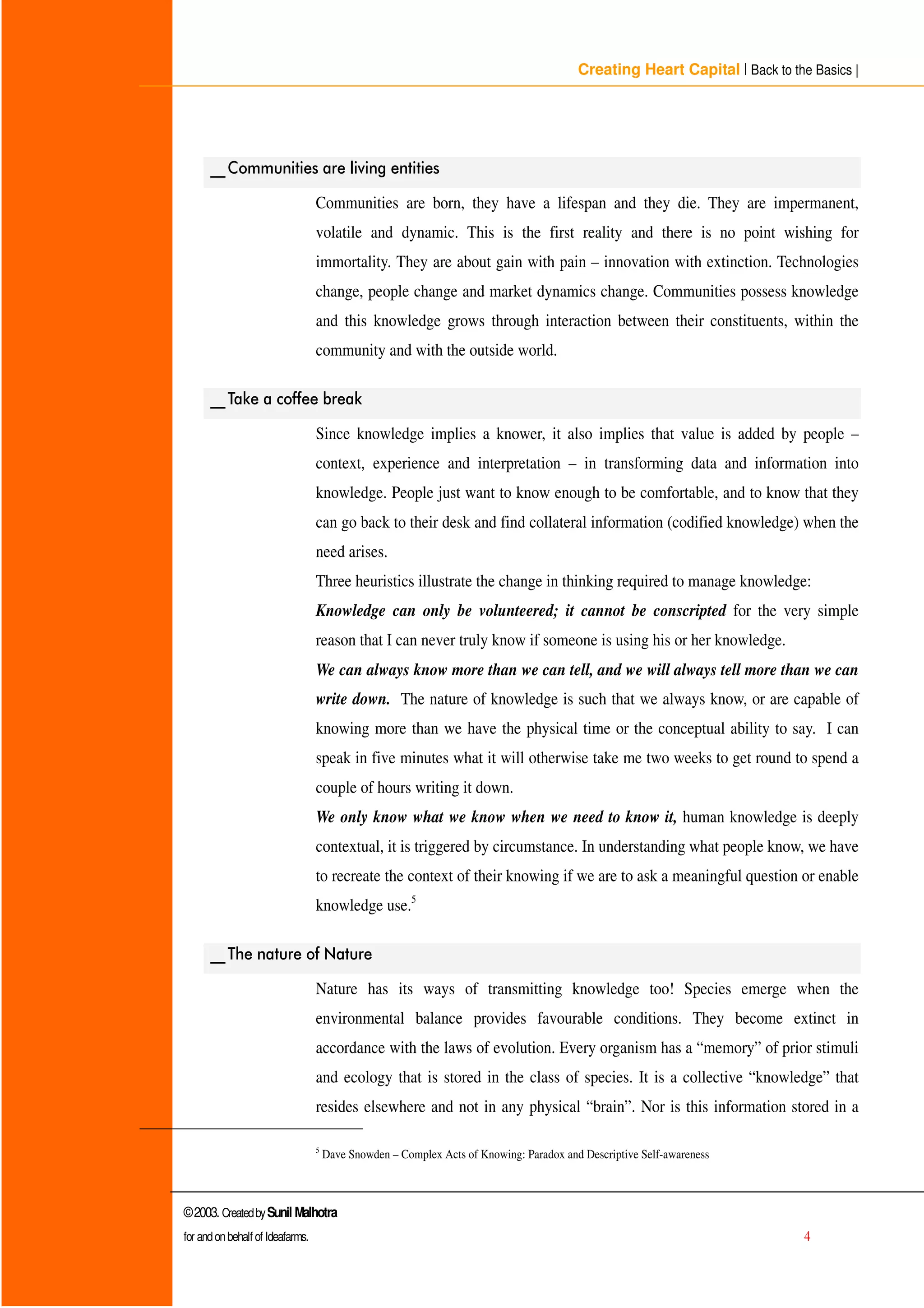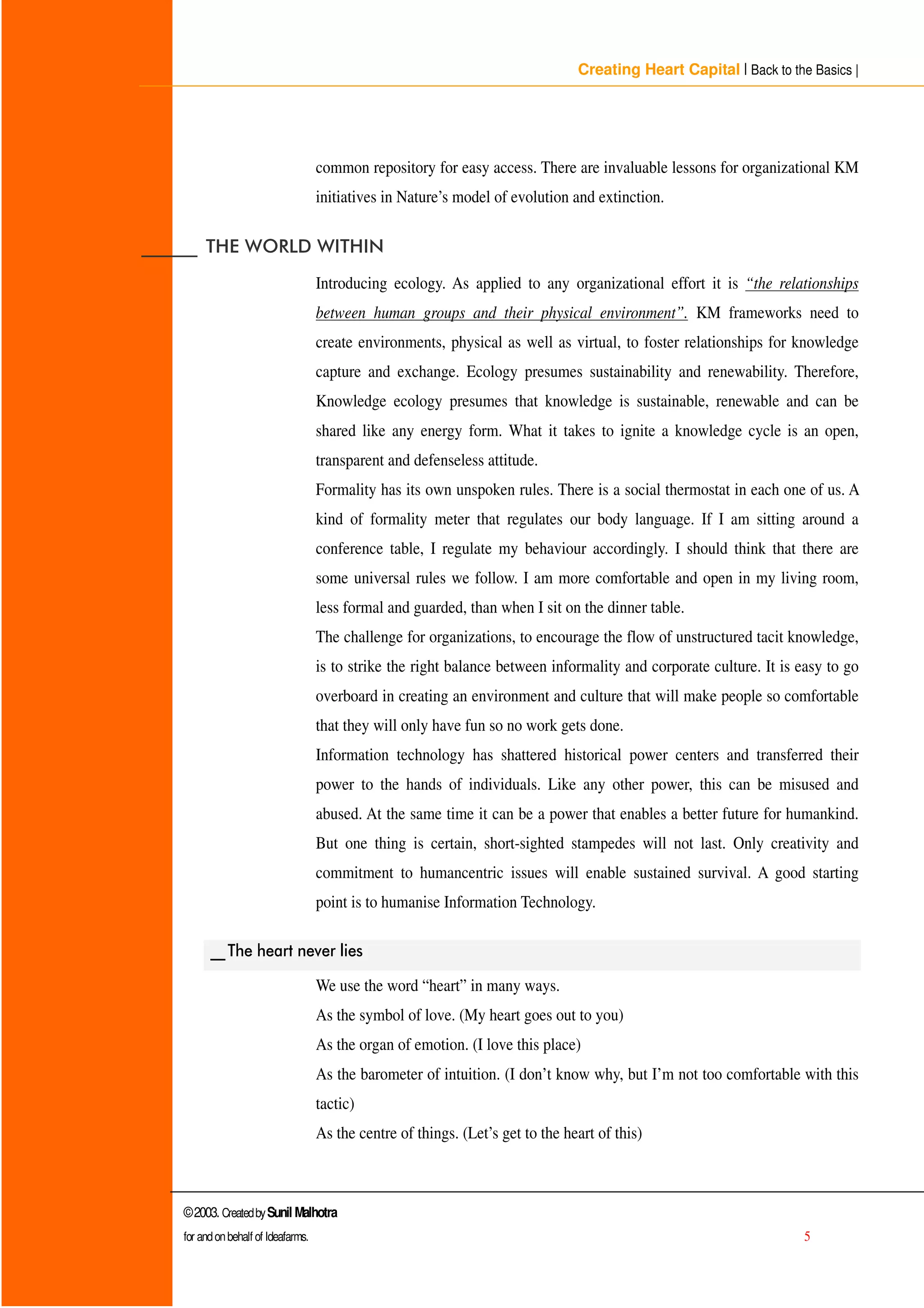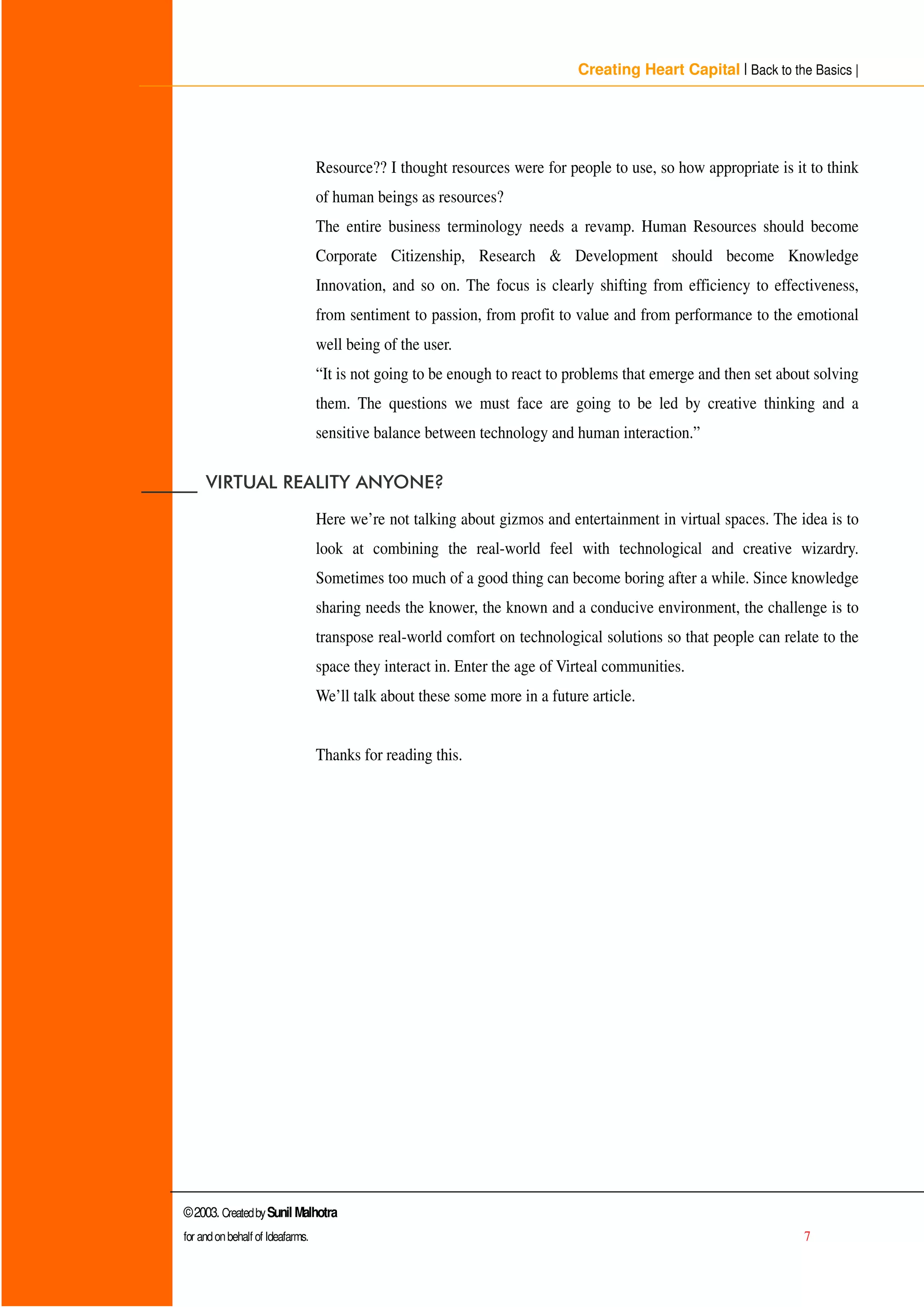The document discusses the importance of human-centered design and knowledge sharing, emphasizing that knowledge management requires an environment that fosters relationships rather than mere databases of information. It critiques traditional management approaches, advocating for a shift towards creating 'heart capital' and emotional connection in organizational culture. The author calls for a rethinking of corporate terminology to better reflect the value of individuals, aiming for a balance between technology and human interaction to enhance knowledge sharing.
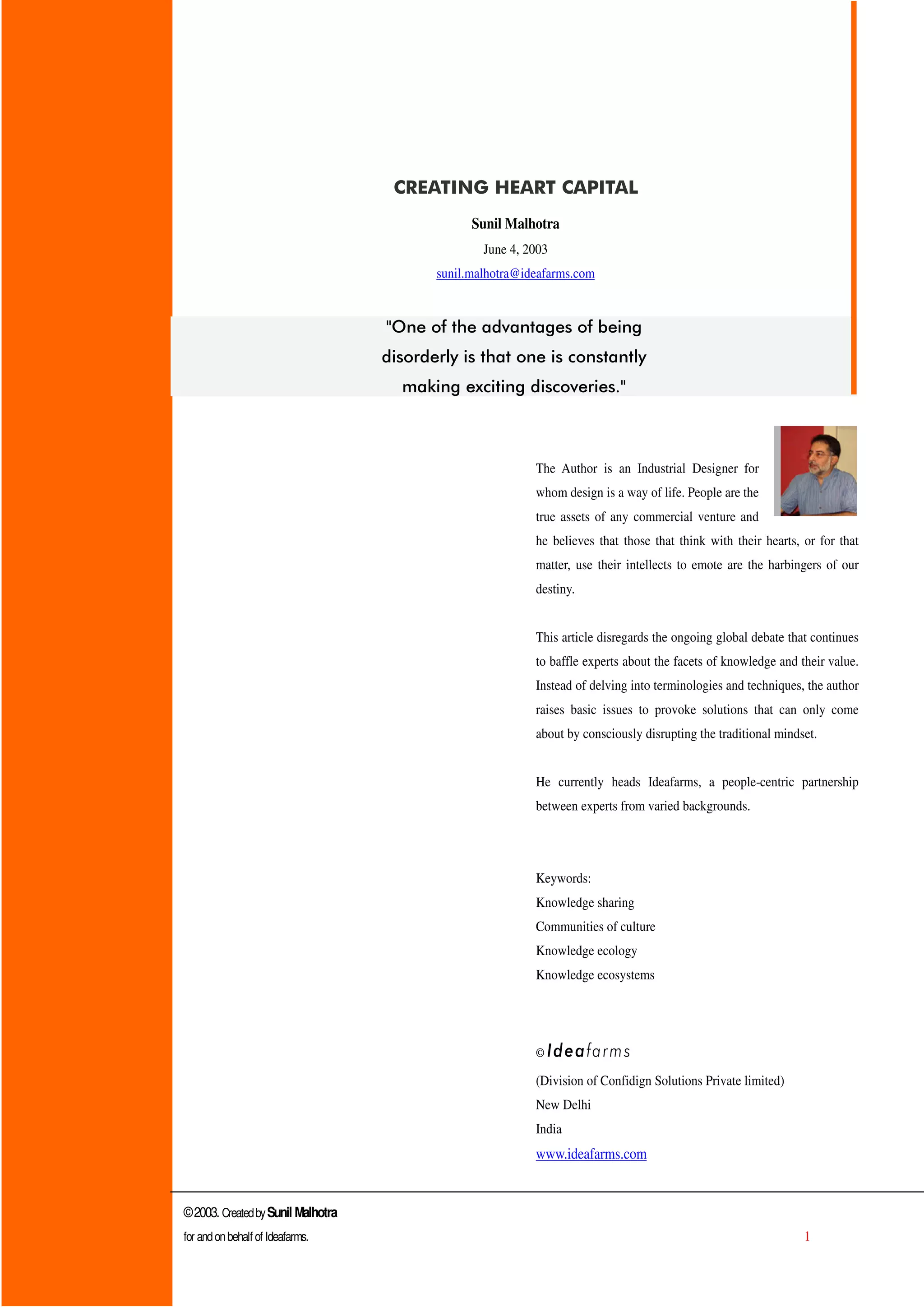
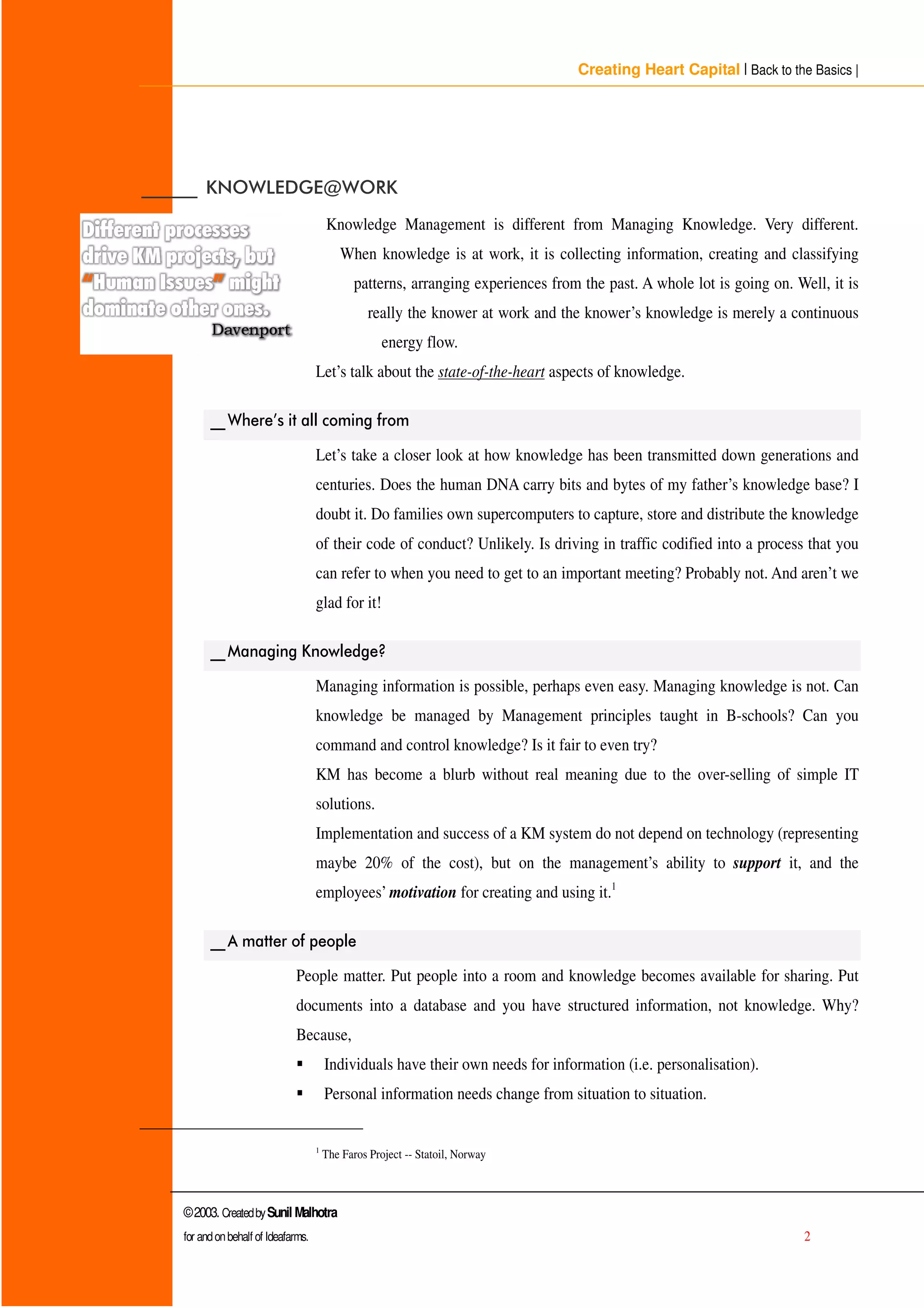
![Creating Heart Capital | Back to the Basics |
©2003. CreatedbySunil Malhotra
for andonbehalf of Ideafarms. 3
ƒ Timely delivery of information to specific contexts is crucial.
ƒ People travel between real-world situations – so do their needs.
7KH 0DWKV RI .QRZOHGJH
The mathematics of knowledge defies all we have learnt as kids. Sharing has 2
connotations. Firstly, when dealing with material, it means “splitting up”. On
the other hand, the social connotation for sharing is “to have together”. If I
share 2 apples with another, we have one apple each, but if I share 2 ideas with
another, we both have 2 ideas each. In the case of knowledge, to share is to
multiply!2
BB7KHUH·V QR $OJRULWKP IRU RPPXQLW
Only an environment. Algorithms are math-based formulae and equations with imposed
constraints. The term algorithm (pronounced AL-go-rith-um) is a procedure or formula
for solving a problem. A computer program can be viewed as an elaborate algorithm. In
mathematics and computer science, an algorithm usually means a small procedure that
solves a recurrent problem.
algorithm4
['ælg ¡ ¢ ð £ ]noun
1. a logical arithmetical or computational procedure that if correctly applied ensures the solution of a
problem
2. (Logic) (maths) a recursive procedure whereby an infinite sequence of terms can be generated
Let technology be. This is the hard part. We feel uncomfortable when there’s nothing
happening. We always want our activities to result in something tangible. We want to
show results. Knowledge flows gently in a community. But it does flow. Unfortunately,
it is invisible and cannot happen through predefined inputs and expected outcomes. If
you know something, you can use the knowledge when you need to.
BBBBBB 6+$5,1* ,6 )81 $1' 86()8/
People like to feel comfortable and will only let their guard down in familiar settings.
People like sharing. People like having fun!
2
From the book “ KALiF”
3
This succinct (and accurate) observation originates, I believe, from Peter Kollock of University of California at Los
Angeles.
4
The Collins English Dictionary © 2000 HarperCollins Publishers](https://image.slidesharecdn.com/heartcapital-140826021937-phpapp02/75/Creating-Heart-Capital-Culture-matters-3-2048.jpg)
